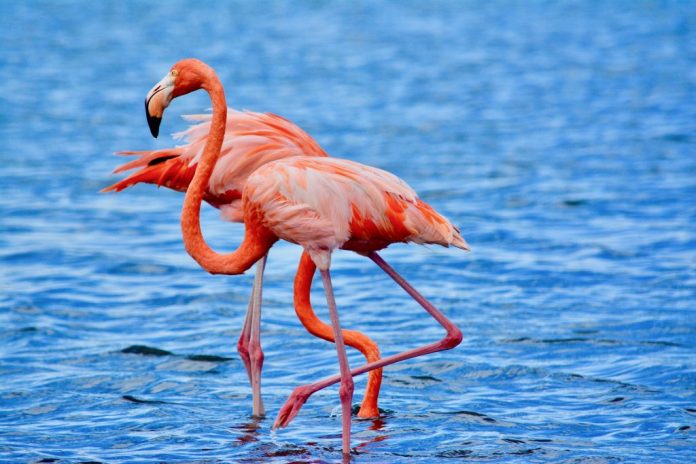Destination values, native heritage, and cultural identity are what we advocate for in our own particular way of safeguarding all reasons to love Aruba. Etnia Nativa, through this cultural blog, “Island-Insight,” shares native cultural awareness, educates, and safeguards native heritage.
It is how we encourage you to experiment with an island-keeper state of mind during your stay.
In this episode, we want to raise awareness about the flamingo—beautiful migrating creatures with bright pink feathers, stilt-like legs, and an S-shaped neck that, when threatened, fly together. In that moment, we can observe their pink-orange color as rising flames. The origin of the name flamingo derives from the word “flame,” which comes from Spanish “flamenco,” or flame-colored. Like Spanish dancers waving their flame-colored skirts
Although they are found in different parts of the world, flamingos are most commonly associated with tropical climates. Flamingos are born with gray plumage and acquire their pink hue by ingesting a type of organic pigment called carotenoid, which comes from algae and crustaceans found mostly in tropical salt lakes and is their main source of food. Microscopic algae produce carotenoids as part of their existence, which gives flamingos their distinctive feature of bright pink feathers.
Our sister island of Bonaire is one of the main breeding locations for the Caribbean flamingo (Phoenicopterus ruber). By the thousands, these long, elegantly pink birds walk on their long stilt legs in and around the salt lakes called pans, building their solid mud mound nests at short but dignified distances from each other. The annual average number of flamingos is an indicator of the health of salt lakes and wetlands. Therefore, every month, the number of flamingos is counted at several key locations on that island. These migratory birds have a small but important and stable population on Bonaire.
There are six species of flamingo: the American Flamingo (Caribbean Flamingo), Andean Flamingo, Chilean Flamingo, Greater Flamingo, James’s Flamingo (Puna Flamingo), and Lesser Flamingo.
The American flamingo is a large species of flamingo, closely related to the greater flamingo and Chilean flamingo, both native to the Neotropics. It is also known as the Caribbean flamingo, although it is also present in the Galapagos Islands. It is the only flamingo that naturally inhabits North America.
On Aruba, flamingos are very rare. A small group of not more than five can sometimes be seen in marshes and salt lakes. All other live flamingos on Aruba are birds kept in captivity by the tourist industry, where their feathers are cut in order to hamper their flight and escape. These cruel acts must be addressed by animal rights groups and reconsidered by our authorities since these are wild animals captured for commercial purposes.
Intrigued by Aruba`s origins and its cultural heritage? Then we encourage you to do something outside of the tourist grid. Become one of the few visitors to Etnia Nativa, a private residential encounter set up where you can touch and be touched by authentic Aruba heritage, a spectacle of native art, archaic and archaeological artifacts, lithic tools, colonial furniture, and other items from the old Aruba. Get inside a recycled environment full of peace, relaxation, knowledge, and information.
Etnia Nativa is, since 1994, the home of Anthony, our acclaimed columnist, artist craftsman, and island Piache, who guides and lectures you through his resplendent collection. E.N. is the only place that recreates and introduces you to an authentic glimpse into Aruba’s native cultural heritage. Something completely different for a change—a contemporary Native Aruba experience!
Appointment is required + 297 592 2702 or etnianativa03@gmail.com




















